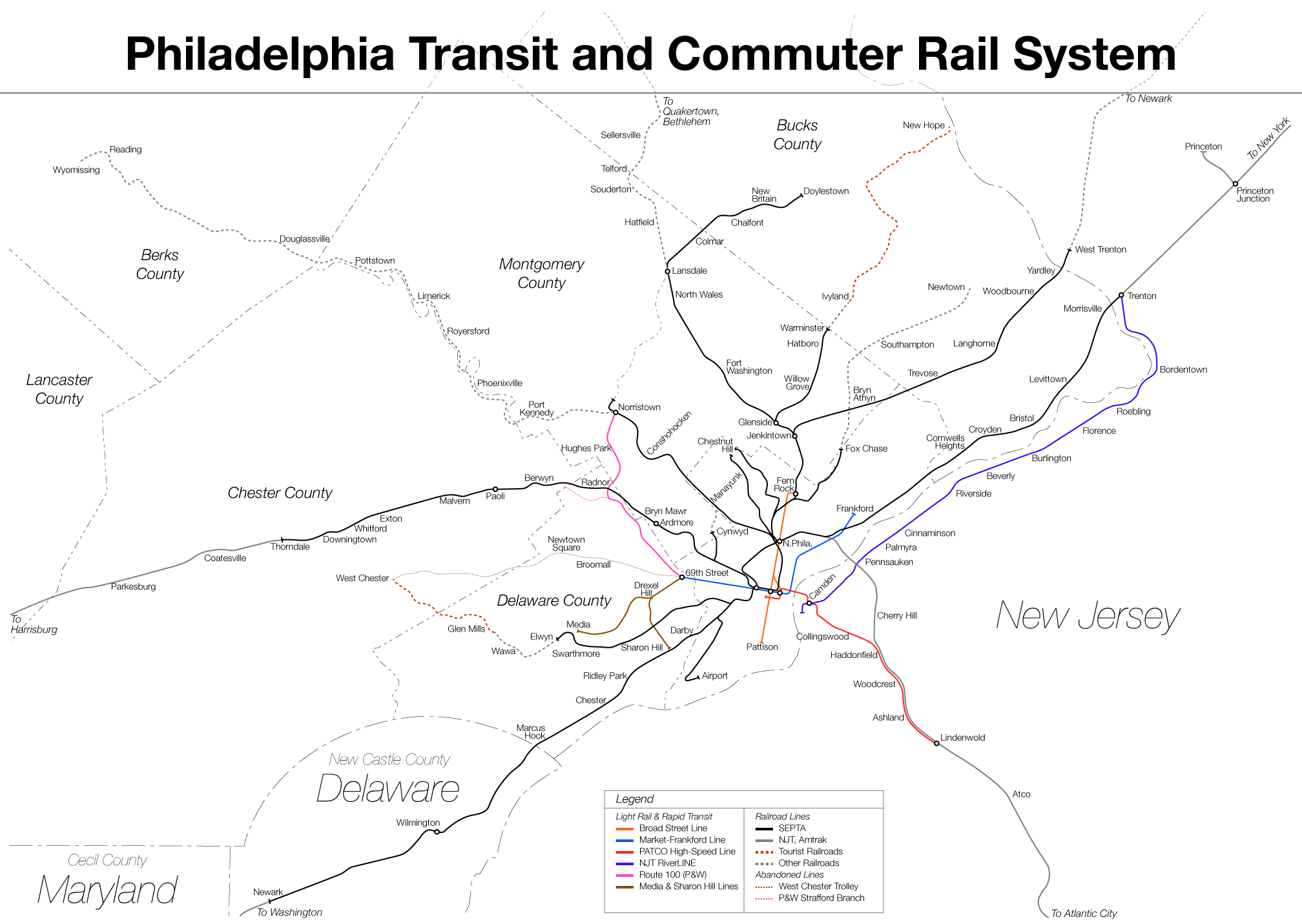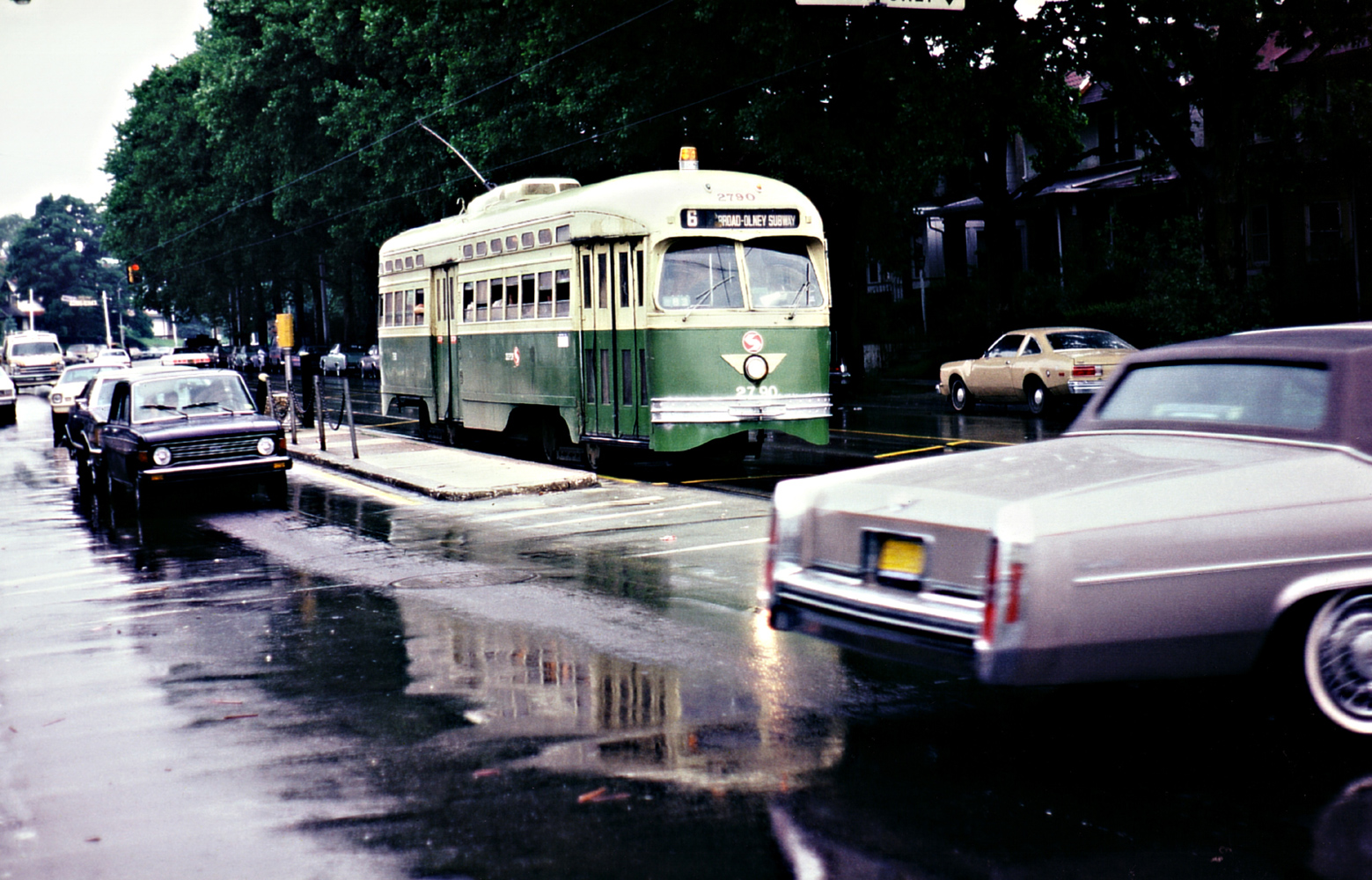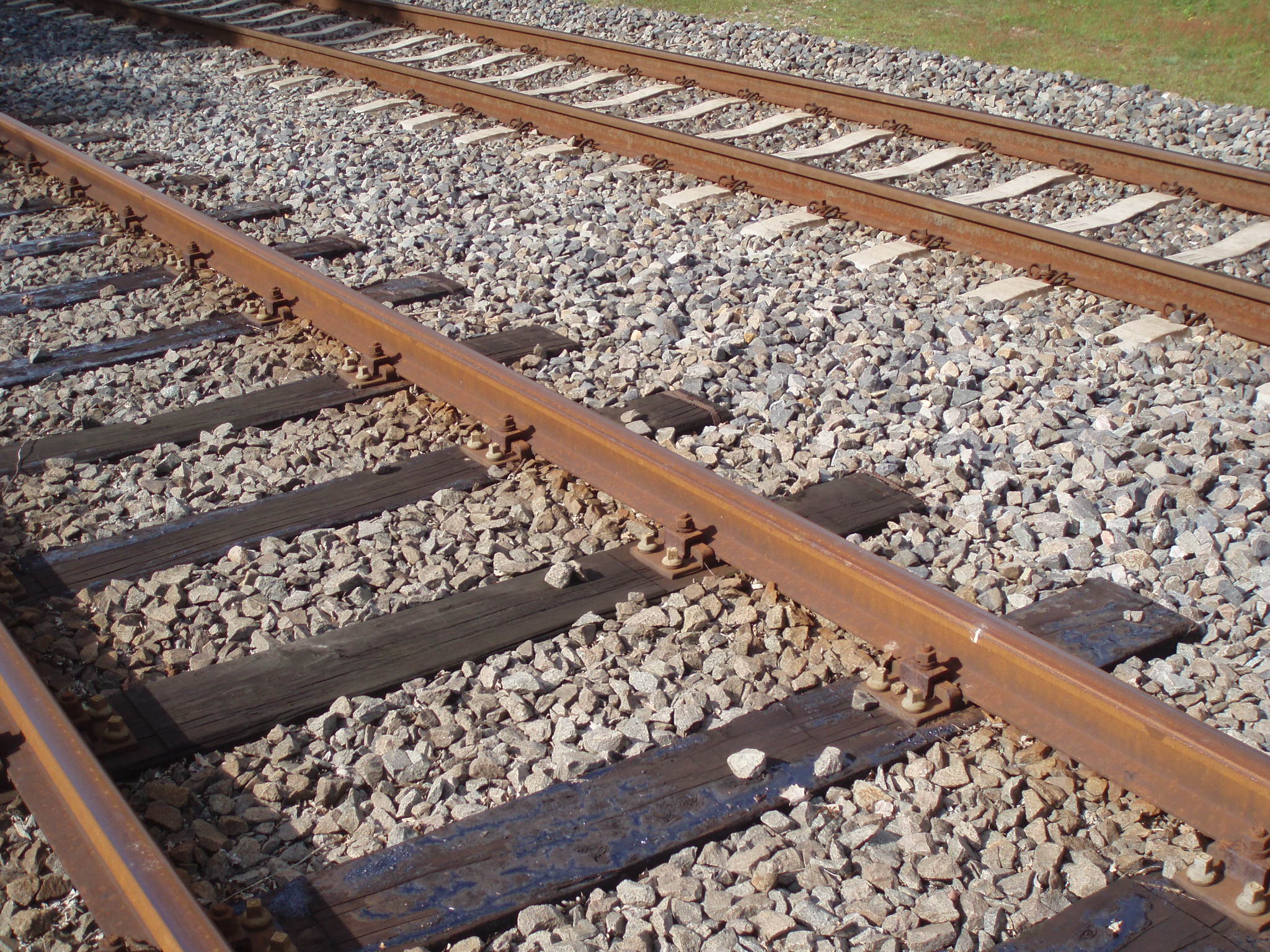|
Norristown Line
The Norristown Branch is a railway line in Pennsylvania. It runs from a junction with the SEPTA Main Line in North Philadelphia to Norristown, Pennsylvania. It was originally built by the Philadelphia, Germantown and Norristown Railroad (PG&N) in 1834, and was a part of the Reading Company system from 1870 until 1976. Today it is owned by SEPTA and hosts the Manayunk/Norristown Line commuter rail service. History The Philadelphia, Germantown and Norristown Railroad completed its initial line between Philadelphia and Germantown in 1832. The geography of the Wissahickon Creek frustrated plans to build directly from Germantown to Norristown, so the company built west from what is now 16th Street Junction in North Philadelphia. This line reached Manayunk on October 18, 1834, and Norristown on August 15, 1835. The line followed the east bank of the Schuylkill River and made no crossing of it. The Philadelphia and Reading Railroad extended its main line down the west bank of ... [...More Info...] [...Related Items...] OR: [Wikipedia] [Google] [Baidu] |
SEPTA
SEPTA, the Southeastern Pennsylvania Transportation Authority, is a regional public transportation authority that operates bus, rapid transit, commuter rail, light rail, and electric trolleybus services for nearly four million people throughout five counties in and around Philadelphia, Pennsylvania. It also manages projects that maintain, replace, and expand its infrastructure, facilities, and vehicles. SEPTA is the major transit provider for Philadelphia and four surrounding counties within the Philadelphia metropolitan area, including Delaware, Montgomery, Bucks, and Chester counties. It is a state-created authority, with the majority of its board appointed by the five counties it serves. Several SEPTA commuter rail and bus services serve New Castle County, Delaware and Mercer County, New Jersey, although service to Philadelphia from South Jersey is provided by the PATCO Speedline, which is run by the Delaware River Port Authority, a bi-state agency, and NJ Transit, w ... [...More Info...] [...Related Items...] OR: [Wikipedia] [Google] [Baidu] |
Swedes Ford Bridge Company
Swedes (), or Swedish people, are an ethnic group native to Sweden, who share a common ancestry, culture, history, and language. They mostly inhabit Sweden and the other Nordic countries, in particular, neighboring Finland, where they are an officially recognized minority, with Swedish being one of the official languages of the country, and with a substantial diaspora in other countries, especially the United States. Etymology The English term "Swede" has been attested in English since the late 16th century and is of Middle Dutch or Middle Low German origin. In Swedish, the term is ''svensk'', which is from the name of ''svear'' (or Swedes), the people who inhabited Svealand in eastern central Sweden, and were listed as ''Suiones'' in Tacitus' history ''Germania'' from the first century AD. The term is believed to have been derived from the Proto-Indo-European reflexive pronominal root, , as the Latin ''suus''. The word may have meant "one's own (tribesmen)". The same root ... [...More Info...] [...Related Items...] OR: [Wikipedia] [Google] [Baidu] |
Railway Lines Opened In 1834
Rail transport (also known as train transport) is a means of transport using wheeled vehicles running in railway track, tracks, which usually consist of two parallel steel railway track, rails. Rail transport is one of the two primary means of land transport, next to road transport. It is used for about 8% of passenger and rail freight transport, freight transport globally, thanks to its Energy efficiency in transport, energy efficiency and potentially high-speed rail, high speed.Rolling stock on rails generally encounters lower friction, frictional resistance than rubber-tyred road vehicles, allowing rail cars to be coupled into longer trains. Power is usually provided by Diesel locomotive, diesel or Electric locomotive, electric locomotives. While railway transport is capital intensity, capital-intensive and less flexible than road transport, it can carry heavy loads of passengers and cargo with greater energy efficiency and safety. Precursors of railways driven by human or an ... [...More Info...] [...Related Items...] OR: [Wikipedia] [Google] [Baidu] |
SEPTA Regional Rail Lines
SEPTA, the Southeastern Pennsylvania Transportation Authority, is a regional public transportation authority that operates bus, rapid transit, commuter rail, light rail, and electric trolleybus services for nearly four million people throughout five counties in and around Philadelphia, Pennsylvania. It also manages projects that maintain, replace, and expand its infrastructure, facilities, and vehicles. SEPTA is the major transit provider for Philadelphia and four surrounding counties within the Philadelphia metropolitan area, including Delaware, Montgomery, Bucks, and Chester counties. It is a state-created authority, with the majority of its board appointed by the five counties it serves. Several SEPTA commuter rail and bus services serve New Castle County, Delaware and Mercer County, New Jersey, although service to Philadelphia from South Jersey is provided by the PATCO Speedline, which is run by the Delaware River Port Authority, a bi-state agency, and NJ Transit, which op ... [...More Info...] [...Related Items...] OR: [Wikipedia] [Google] [Baidu] |
Level Crossing
A level crossing is an intersection where a railway line crosses a road, Trail, path, or (in rare situations) airport runway, at the same level, as opposed to the railway line or the road etc. crossing over or under using an Overpass#Railway, overpass or tunnel. The term also applies when a light rail line with separate Right-of-way (railroad), right-of-way or reserved track crosses a road in the same fashion. Other names include railway level crossing, railway crossing (chiefly international), grade crossing or railroad crossing (chiefly American), road through railroad, criss-cross, train crossing, and RXR (abbreviated). There are more than 100,000 level crossings in Europe and more than 200,000 in North America. Road-grade crossings are considered incompatible with high-speed rail and are virtually non-existent in European high-speed train operations. File:The 5.20 for West Kirby leaving Hoylake - geograph.org.uk - 1503619.jpg, A level crossing at Hoylake, Merseyside, Engl ... [...More Info...] [...Related Items...] OR: [Wikipedia] [Google] [Baidu] |
Railroad Tie
A railroad tie, crosstie (American English), railway tie (Canadian English) or railway sleeper ( Australian and British English) is a rectangular support for the rails in railroad tracks. Generally laid perpendicular to the rails, ties transfer loads to the track ballast and subgrade, hold the rails upright and keep them spaced to the correct gauge. Railroad ties are traditionally made of wood, but prestressed concrete is now also widely used, especially in Europe and Asia. Steel ties are common on secondary lines in the UK; plastic composite ties are also employed, although far less than wood or concrete. As of January 2008, the approximate market share in North America for traditional and wood ties was 91.5%, the remainder being concrete, steel, azobé (red ironwood) and plastic composite. Tie spacing may depend on the type of tie, traffic loads and other requirements, for example on North American mainline railroads to on London, Midland and Scottish Railway joi ... [...More Info...] [...Related Items...] OR: [Wikipedia] [Google] [Baidu] |
Overhead Line
An overhead line or overhead wire is an electrical cable that is used to transmit electrical energy to electric locomotives, Electric multiple unit, electric multiple units, trolleybuses or trams. The generic term used by the International Union of Railways for the technology is ''overhead line''. It is known variously as overhead catenary, overhead contact line (OCL), overhead contact system (OCS), overhead equipment (OHE), overhead line equipment (OLE or OHLE), overhead lines (OHL), overhead wiring (OHW), traction wire, and trolley wire. An overhead line consists of one or more wires (or Overhead conductor rail, rails, particularly in tunnels) situated over rail tracks, raised to a high electrical potential by connection to feeder stations at regularly spaced intervals along the track. The feeder stations are usually fed from a High voltage, high-voltage Electricity distribution, electrical grid. Overview Electric trains that collect their current from overhead lines use a de ... [...More Info...] [...Related Items...] OR: [Wikipedia] [Google] [Baidu] |
Cab Signaling System
Pulse code cab signaling is a form of cab signaling technology developed in the United States by the Union Switch and Signal corporation for the Pennsylvania Railroad in the 1920s. The 4-aspect system widely adopted by the PRR and its successor railroads has become the dominant railroad cab signaling system in North America with versions of the technology also being adopted in Europe and rapid transit systems. In its home territory on former PRR successor Conrail owned lines and on railroads operating under the NORAC Rulebook it is known simply as Cab Signaling System or CSS. History In 1922 the Interstate Commerce Commission issued a ruling requiring trains to be equipped with automatic train stop technology if they were to be operated at 80 mph or greater. The Pennsylvania Railroad decided to use this as an opportunity to implement a signaling technology that could improve both safety and operational efficiency by displaying a signal continuously in the locomotive ca ... [...More Info...] [...Related Items...] OR: [Wikipedia] [Google] [Baidu] |
Automatic Block Signaling
Automatic block signaling (ABS), spelled automatic block signalling or called track circuit block (TCB ) in the UK, is a railroad communications system that consists of a series of signals that divide a railway line into a series of sections, called ''blocks''. The system controls the movement of trains between the blocks using automatic signals. ABS operation is designed to allow trains operating in the same direction to follow each other in a safe manner without risk of rear-end collision. The introduction of ABS reduced railways' costs and increased their capacity. Older manual block systems required human operators. The automatic operation comes from the system's ability to detect whether blocks are occupied or otherwise obstructed, and to convey that information to approaching trains. The system operates without any outside intervention, unlike more modern traffic control systems that require external control to establish a flow of traffic. History The earliest way of ... [...More Info...] [...Related Items...] OR: [Wikipedia] [Google] [Baidu] |
Conrail
Conrail , formally the Consolidated Rail Corporation, was the primary Class I railroad in the Northeastern United States between 1976 and 1999. The trade name Conrail is a portmanteau based on the company's legal name. It continues to do business as an asset management and network services provider in three Shared Assets Areas that were excluded from the division of its operations during its acquisition by CSX Corporation and the Norfolk Southern Railway. The federal government created Conrail to take over the potentially profitable lines of multiple bankrupt carriers, including the Penn Central Transportation Company and Erie Lackawanna Railway. After railroad regulations were lifted by the 4R Act and the Staggers Act, Conrail began to turn a profit in the 1980s and was privatized in 1987. The two remaining Class I railroads in the East, CSX Transportation and the Norfolk Southern Railway (NS), agreed in 1997 to acquire the system and split it into two roughly-equal parts ... [...More Info...] [...Related Items...] OR: [Wikipedia] [Google] [Baidu] |
Barbadoes Island (Pennsylvania)
Barbadoes Island is an island in the Schuylkill River in West Norriton Township, south of Norristown in Montgomery County, Pennsylvania, United States. Southbound U.S. Route 202 and various localized rail lines cross over the eastern tip of the island. It is about in size.Kennedy, Joseph S.Barbadoes Island a hot spot for recreation in early 1800s" Philadelphia, Pennsylvania: ''The Philadelphia Inquirer'', January 16, 2000, p. 314 (subscription required). History 18th century Barbadoes Island was part of the original land grants made to William Penn. In the 1700s, the University of Pennsylvania acquired title to Barbados Island. The name of Barbadoes Island may reflect a trade relationship between Philadelphia and Barbados, an island in the West Indies that was also under British control at one time. Wealthy planters from the Caribbean isle sent their children to Philadelphia to be educated. 19th century During the early 1800s, John Markley purchased Barbadoes Island, where h ... [...More Info...] [...Related Items...] OR: [Wikipedia] [Google] [Baidu] |
Norristown Junction Railroad
Norristown may mean: * Norristown, Arkansas, an unincorporated community * Norristown, Georgia, an unincorporated community * Norristown, Indiana, an unincorporated community * Norristown, Pennsylvania, a borough ** Norristown Transportation Center Norristown Transit Center is a two-level multimodal public transportation regional hub located in Norristown, Pennsylvania and operated by SEPTA. It opened in 1989, replacing the older M terminus one block away at Main and Swede Streets, and ..., a train station in Norristown ** Other train stations in Norristown: *** Main Street station (SEPTA) *** Elm Street station * Norristown, California, an ephemeral California Gold Rush settlement on the American River {{geodis ... [...More Info...] [...Related Items...] OR: [Wikipedia] [Google] [Baidu] |










